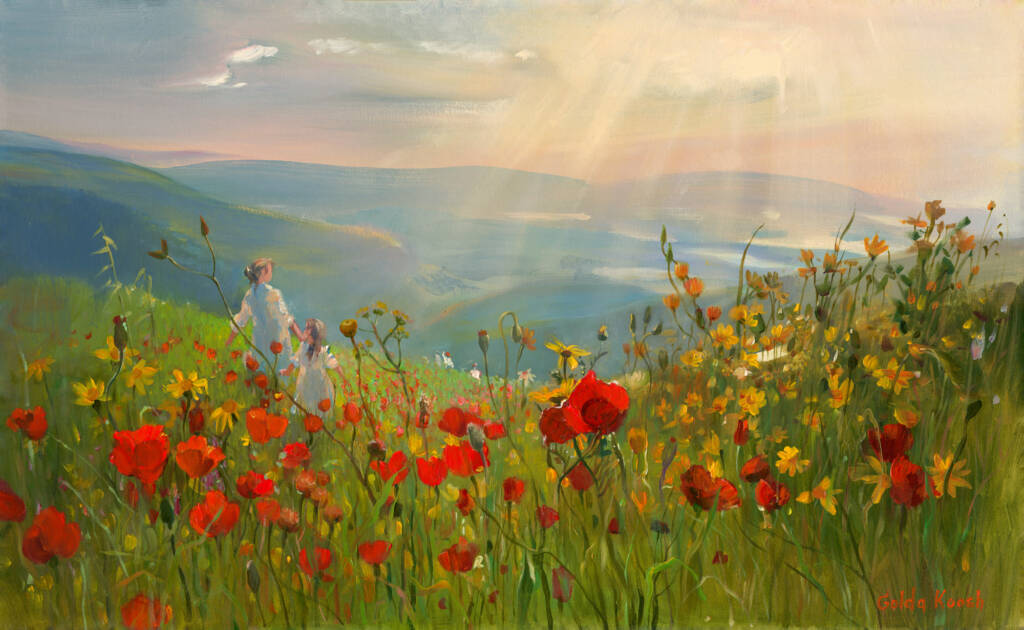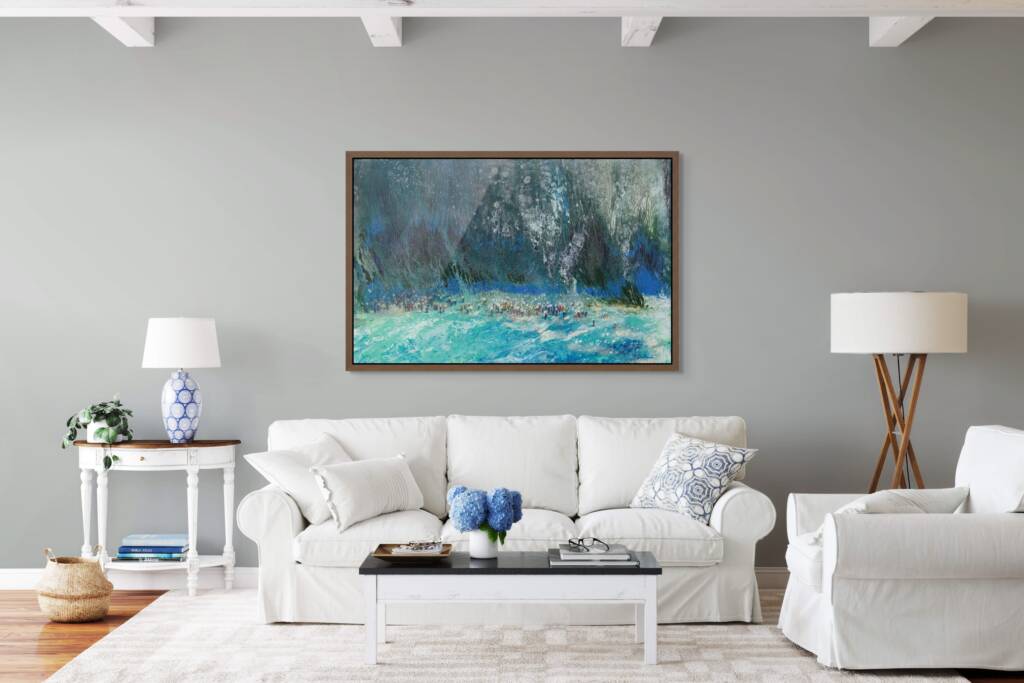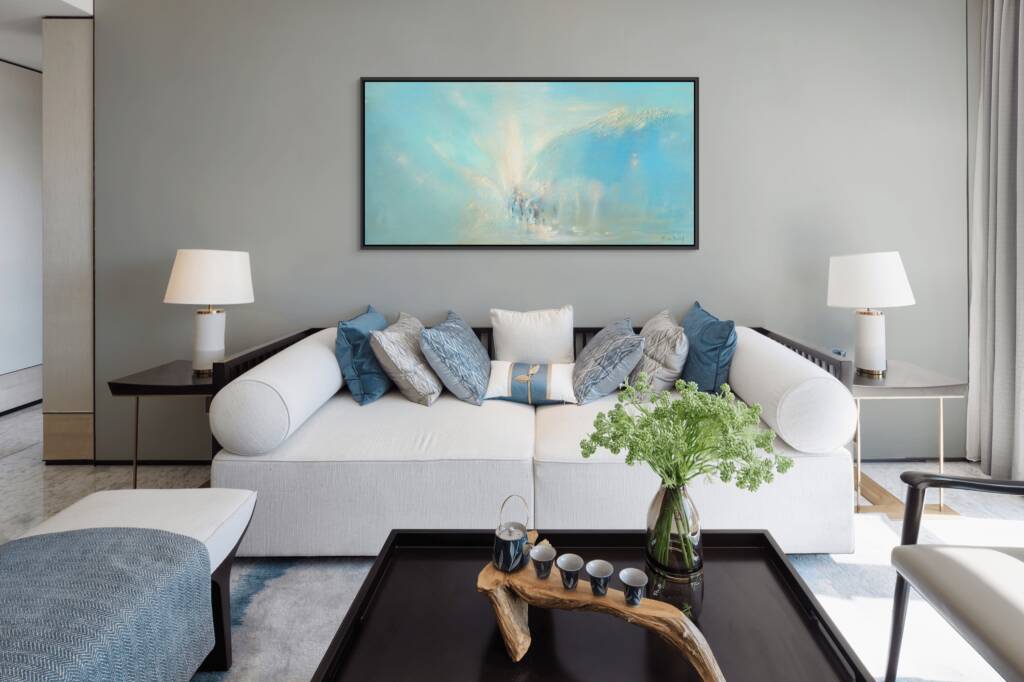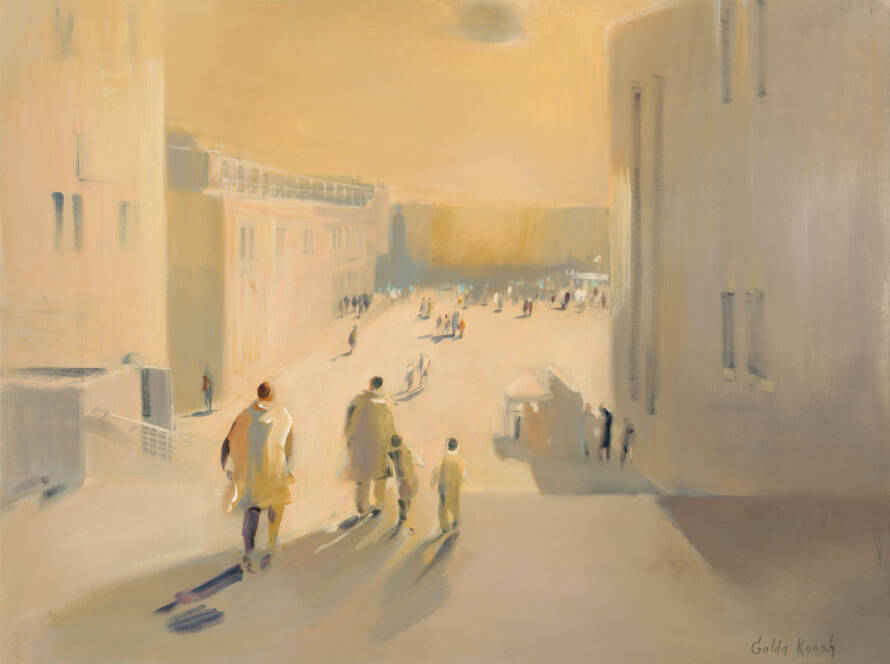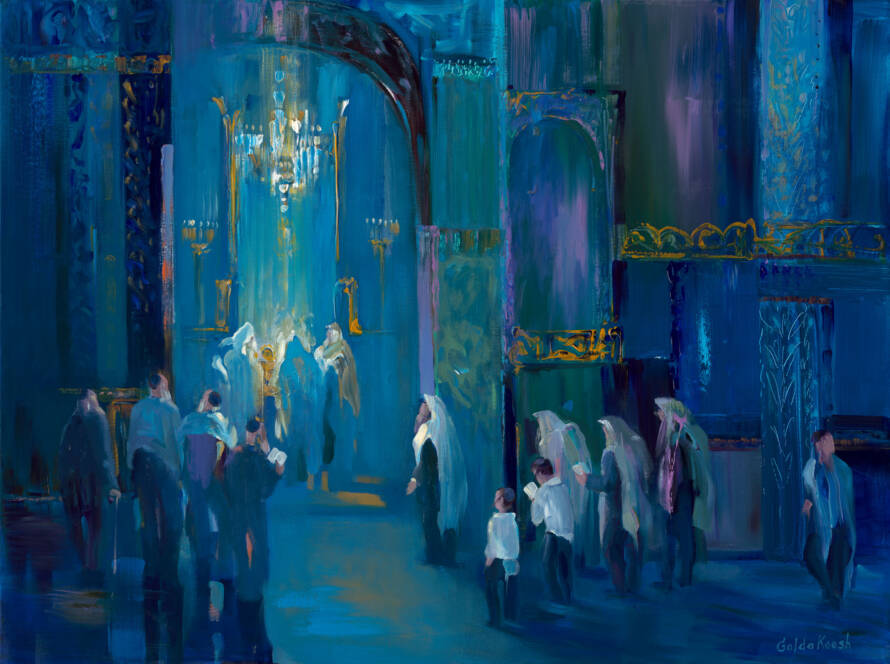Blue has always held a special place in Golda Koosh’s artistic language. In her view, it is more than a color, it is a state of being. Through each blue painting, she invites viewers into a space of calm, reflection, and spiritual depth. Blue is her way of communicating emotions that words often fail to express. In her recent body of work, blue has become central, not only as an aesthetic choice but as a pathway to the soul.
Why Blue Speaks Louder Than Words
To understand Koosh’s connection to blue, one must look at both her technique and her inspiration. Trained at the prestigious Moscow School of Arts, Koosh learned classical skills rooted in tradition. However, it was her Aliyah to Israel that transformed her artistic direction. Surrounded by the light of Jerusalem, the open skies, and the sacred rhythms of daily life, she began to explore the emotional resonance of color more deeply.
A blue painting in Koosh’s collection often carries a sense of stillness. It creates a space for introspection. Whether it is the quiet dawn of a sunrise prayer or the gentle folds of a tallit, the use of blue evokes an internal landscape, a sense of inner peace.
Paintings That Reflect the Soul
One of her most beloved pieces, Children of the Land, shows two young girls running through a field of calanit flowers under a sky brushed in pale blue. The sunlight filters through the clouds like a message from above. Collectors often say the painting reminds them of hope, of childhood, and of the beauty in stillness.
Another work, Walls of Water, Walls of Faith, depicts the dramatic moment of the Red Sea splitting. While the scene is intense, it is painted in deep, moody blues that suggest not only danger but divine intervention. It captures that pivotal moment of fear, faith, and deliverance. This blue painting becomes a spiritual mirror, reflecting the courage it takes to walk into the unknown.
Blue as Spiritual Language
In Koosh’s artistic philosophy, color is never random. Blue represents the soul’s yearning. It is the color of prayer shawls, the sky over Jerusalem, and the sea that holds the memory of miracles. In many ways, it is the color of Jewish history itself, timeless, layered, and profound.
Sacred Morning Light Over Jerusalem captures a moment of spiritual awakening as figures make their way to the Kotel in the stillness of early morning. Bathed entirely in soft blue tones, the painting exudes a sense of serenity and reverence. The sky, buildings, and figures seem to blend into one harmonious composition, reflecting the quiet holiness of daybreak in the holy city. In this blue painting, Koosh offers more than a scene, she offers a feeling. It is the sacred calm that comes just before prayer, when the world is hushed and the soul is open.
Collectors from around the world are drawn to Koosh’s blue-themed works. They speak to a universal longing for peace, understanding, and home. Some see personal memories reflected in the hues. Others find comfort and spiritual grounding. For many, a blue painting by Koosh is not just a piece of art, it is a daily source of inspiration.
A Timeless Message in Every Brushstroke
Golda Koosh continues to explore the emotional depths of blue in her art. With each painting, she reaffirms her belief that art can connect people to something higher, to history, to faith, and the eternal.
A blue painting is not merely something to admire. In Koosh’s hands, it becomes something to feel, to remember, and to cherish. Through the sacred lens of color, she offers viewers a quiet place in a noisy world. And in doing so, she honors the soul of Jewish art with every brushstroke.



